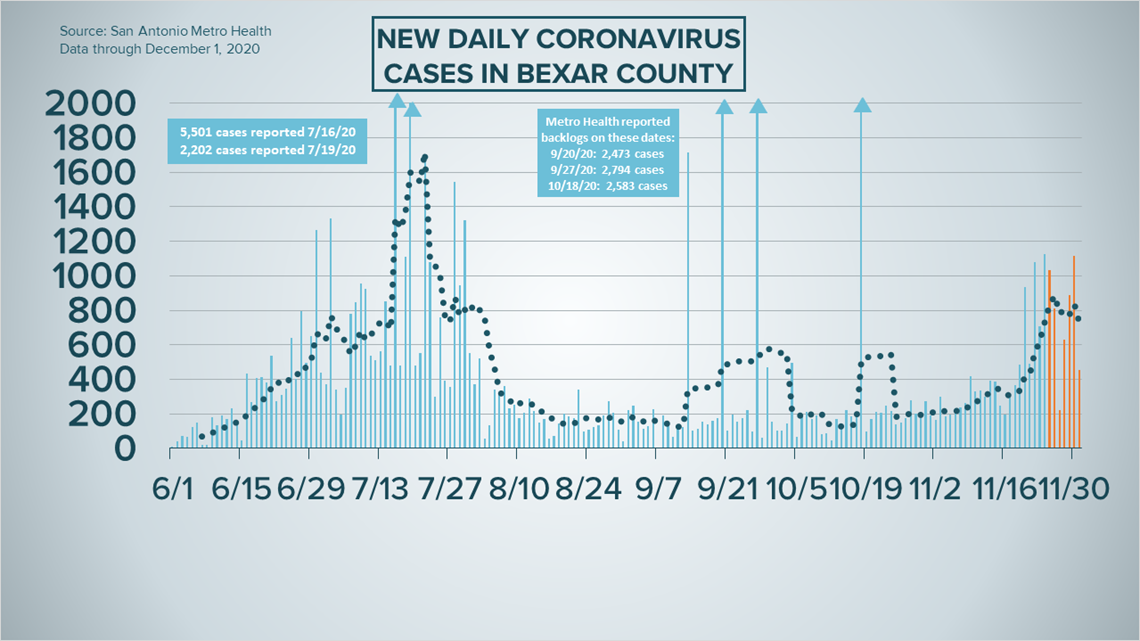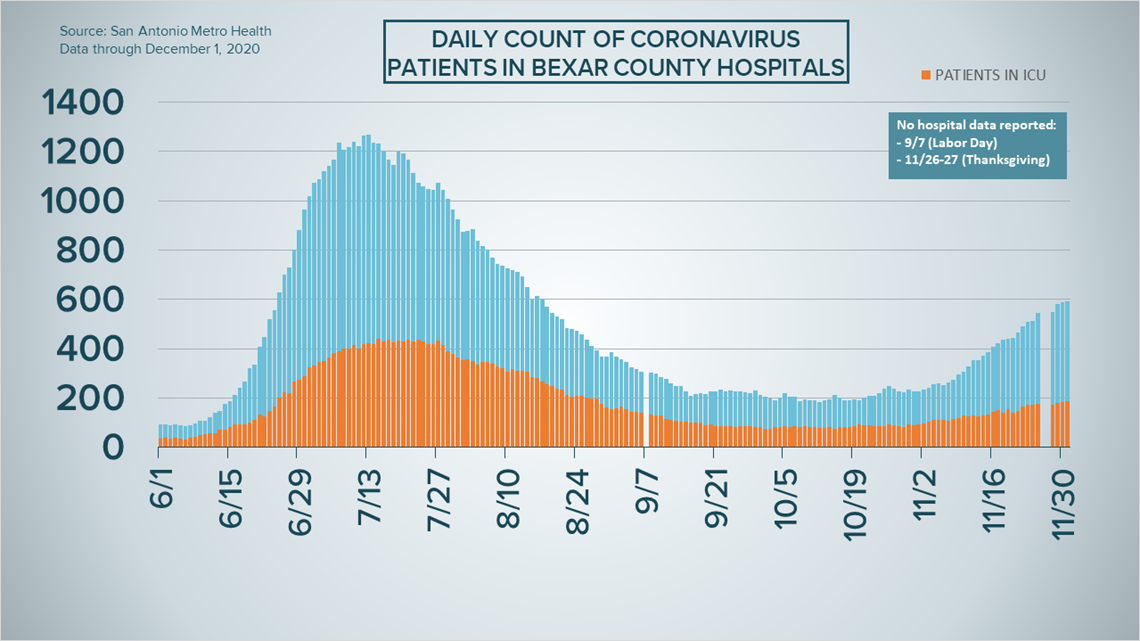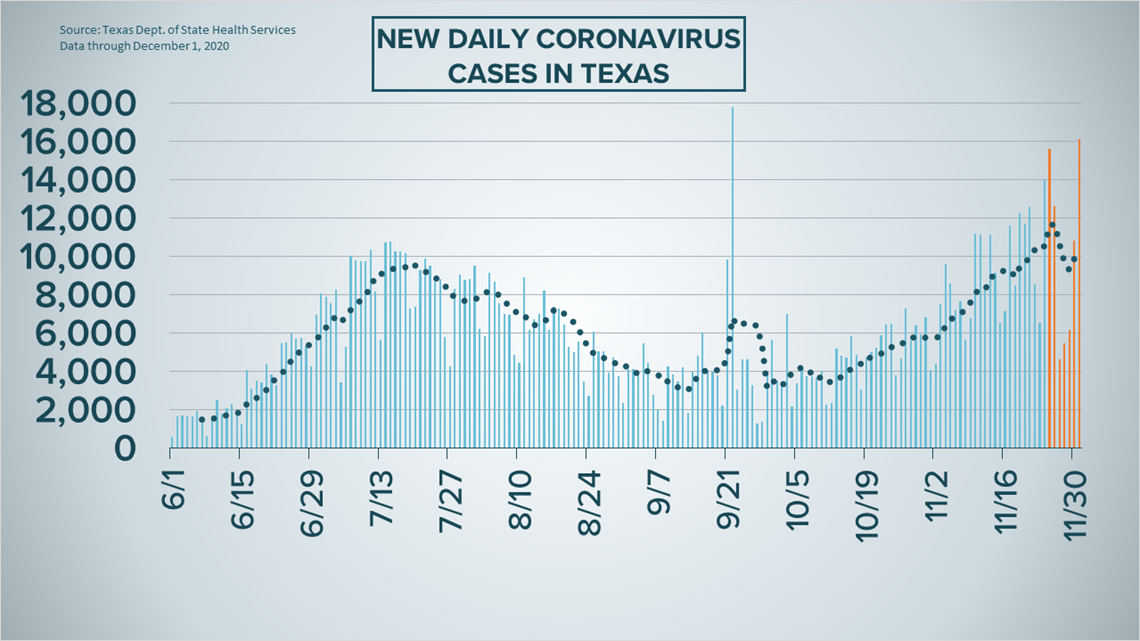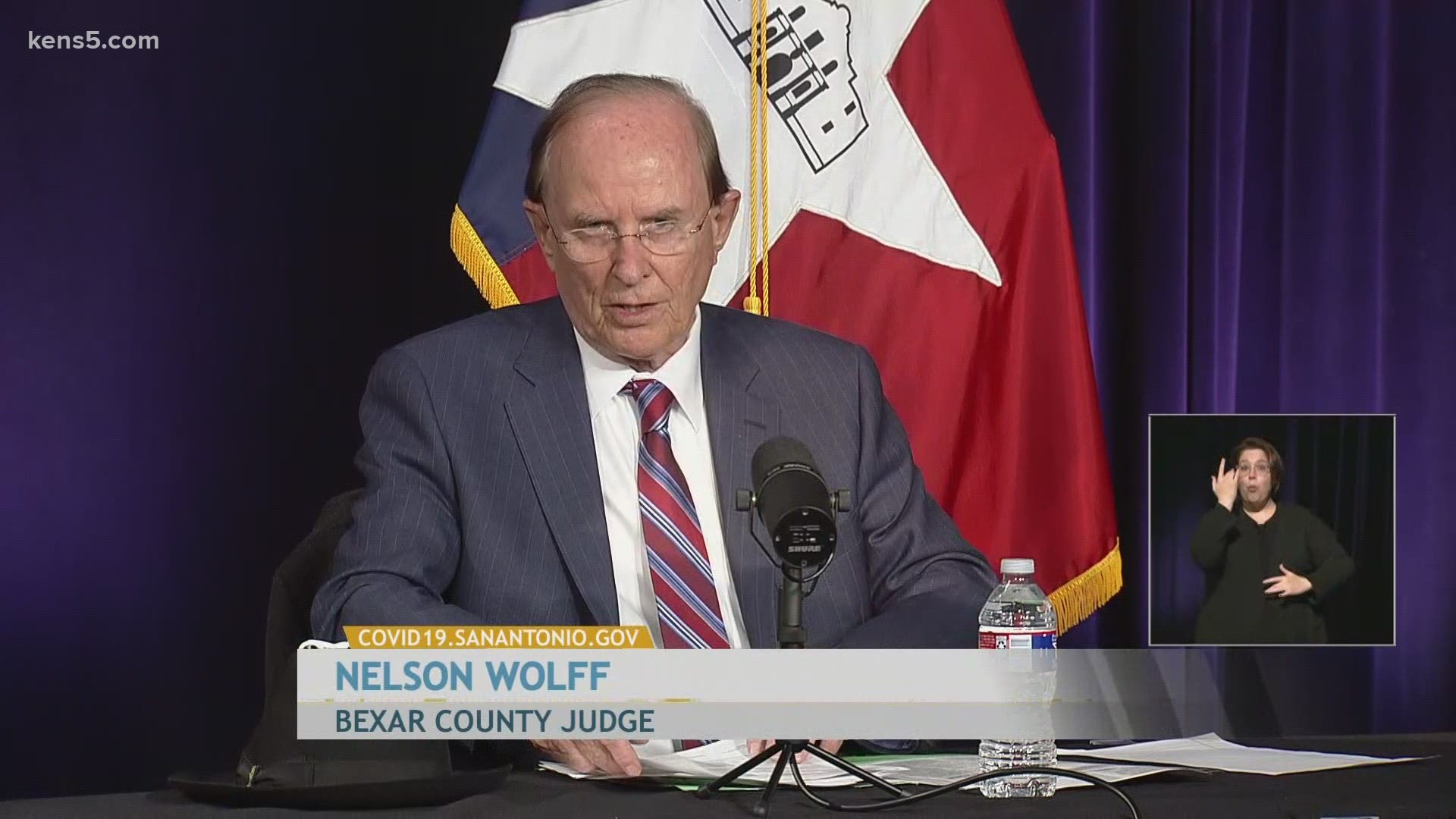SAN ANTONIO — We're tracking the latest numbers from the coronavirus pandemic in San Antonio and across Texas. Here are the latest numbers reported by Bexar and surrounding counties:
- Bexar County: 452 new cases were reported on Tuesday, bringing the total number of cases to 81,626. Five new deaths were reported, raising the death toll to 1,362.
- Hays County: Officials in Hays County on Tuesday reported 51 new cases in the county and two additional COVID-related fatalities. As of Tuesday, there are a total of 7,429 lab-confirmed cases in the county (719 of which are active), while the death toll rose to 104. 6,606 residents have recovered from the virus.
- Comal County: Comal County reported an additional 87 coronavirus cases – 81 new and six from backlogs – on Tuesday, bringing its total of diagnoses to 4,595. Two more county residents have died from COVID-19 complications, according to local officials, for a total of 130 local virus-related deaths. The county estimates 561 active cases on Tuesday.
More county case information is available through the Texas Department of Health Services COVID-19 dashboard.
How Bexar County is trending
We've tracked how many coronavirus cases have been confirmed in Bexar County from the time officials began reporting cases in March 2020. The graphic below shows the number of cases since June and charts those daily case numbers along a 7-day moving average to provide a more accurate picture of the overall coronavirus case curve in our area and the direction we're trending amid the pandemic.
On Tuesday evening, San Antonio Mayor Ron Nirenberg reported 452 more novel coronavirus cases in Bexar County, which is about 40% lower than Monday's total of more than 1,100. A total of 81,626 county residents have been diagnosed with the virus.
Nirenberg also reported that five more county residents have died from COVID-19 complications, raising the local death toll to 1,362.


Hospitalizations continue to tick upward in Bexar County, although Tuesday's increase was relatively small. There are six more patients receiving treatment for COVID-19 symptoms at area hospitals, 76 of which are from the El Paso area. There are 104 local patients on ventilators and 188 in intensive care; both those figures are up from Monday.


Nirenberg also said that the school risk level as it pertains to coronavirus spread remains in the intermediate "moderate" zone, meaning that local health officials are recommending in-person learning for at-risk students, pupils with special needs and those students who lack remote-learning resources.
Meanwhile, Metro Health Medical Director Junda Woo says it's their hope that a COVID-19 vaccine begins to be distributed in San Antonio by mid-December, but acknowledged it could be closer to the new year if it takes longer for government authorities to formulate an immunization strategy.
Coronavirus in Texas
The total number of novel coronavirus cases in the state since the pandemic began grew by 16,139 on Tuesday, according to the Texas Department of State Health Services.
That total includes 15,182 new confirmed cases and 1,227 cases attributed to backlogs not previously reported in the state's total (more details can be found at the top of this page). The state also removed 270 cases from the overall case count after it was discovered that Galveston County overcounted its Monday total.
As of Tuesday, nearly 1.24 million Texans have been diagnosed with COVID-19. Of those, 1.18 million diagnoses are confirmed via molecular testing, while another 54,253 are positive antigen tests.


State health authorities also reported 170 additional virus-related deaths on Tuesday, a sharp increase from Monday's reported total of 22. At least 21,549 Texans have died from COVID-19 complications.
The number of COVID-19-related hospital patients, meanwhile, rose by another 147 overall patients over the past 24 hours, meaning the figure has surpassed 9,000. It currently sits at 9,047—the highest hospitalization numbers have been for the Lone Star State since the end of July. Over the last week, hospitalizations have gone up 6.5% in Texas, and that number accounts for a drop in patients over the holiday weekend.
Meanwhile, the state estimates that 976,517 Texans have recovered, while 188,984 Texans remain ill with COVID-19.
The latest update from the Texas Education Agency showed that there have been 50,420 cumulative cases among staff and students across the state through Nov. 15. More information can be found here.
The TEA typically releases new data on school cases every Thursday but not did do so on the Thanksgiving holiday. Officials said the latest numbers will be reported later this week.
Latest Coronavirus Headlines
- CDC to shorten quarantine guideline to 10 days; 7 days with negative test
- Panel recommends health care workers, long-term care residents get COVID-19 vaccine first
- VERIFY: Are 800 small businesses closing each day in the US?
- Texas Medical Association COVID-19 experts urge testing in schools
- Tuesday marks 1 year since first known COVID-19 patient developed symptoms
- COVID-19 was likely in US as early as December 2019, study suggests
- Is shopping in stores safe during the pandemic?
- Metro Health warns against indoor dining, gatherings in latest directive
- Churches to help the homeless from cold weather, COVID-19
Coronavirus symptoms
The symptoms of coronavirus can be similar to the flu or a bad cold. Symptoms include fever or chills, cough, shortness of breath or difficulty breathing, fatigue, muscle or body aches, headache, new loss of taste or smell sore throat, congestion or runny nose, nausea or vomiting and diarrhea, according to the Centers for Disease Control.
Most healthy people will have mild symptoms. A study of more than 72,000 patients by the Centers for Disease Control in China showed 80 percent of the cases there were mild.
But infections can cause pneumonia, severe acute respiratory syndrome, kidney failure, and even death, according to the World Health Organization. Older people with underlying health conditions are most at risk.
But infections can cause pneumonia, severe acute respiratory syndrome, kidney failure, and even death, according to the World Health Organization. Older people with underlying health conditions are most at risk.
Experts determined there was consistent evidence these conditions increase a person's risk, regardless of age:
- Chronic kidney disease
- COPD (chronic obstructive pulmonary disease)
- Obesity (BMI of 30 or higher)
- Immunocompromised state (weakened immune system) from solid organ transplant
- Serious heart conditions, such as heart failure, coronary artery disease, or cardiomyopathies
- Sickle cell disease
- Type 2 diabetes
The CDC believes symptoms may appear anywhere from two to 14 days after being exposed.
Human coronaviruses are usually spread...
- Between people who are in close contact with one another (within about 6 feet).
- Through respiratory droplets produced when an infected person coughs, sneezes or talks. These droplets can land in the mouths or noses of people who are nearby or possibly be inhaled into the lungs.
- Some recent studies have suggested that COVID-19 may be spread by people who are not showing symptoms.
Help stop the spread of coronavirus
- Stay home when you are sick.
- Eat and sleep separately from your family members
- Use different utensils and dishes
- Cover your cough or sneeze with your arm, not your hand.
- If you use a tissue, throw it in the trash.

